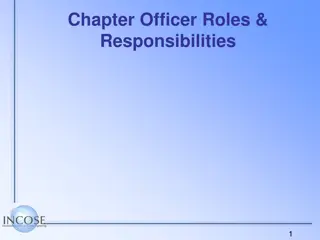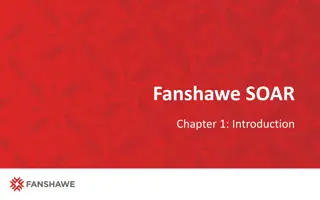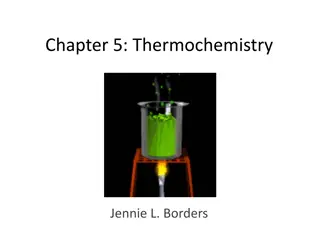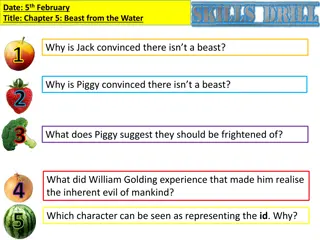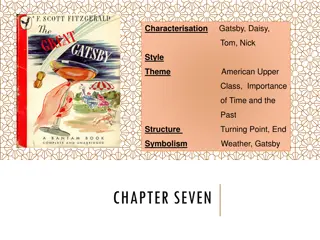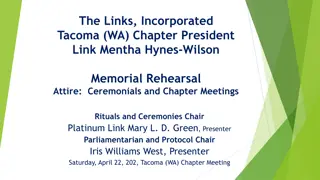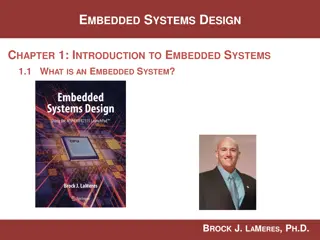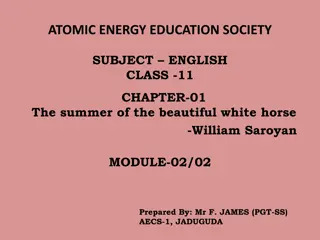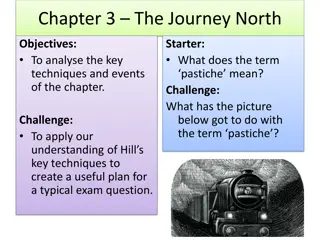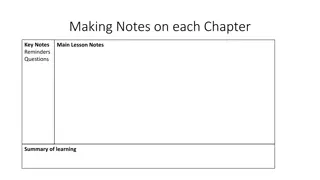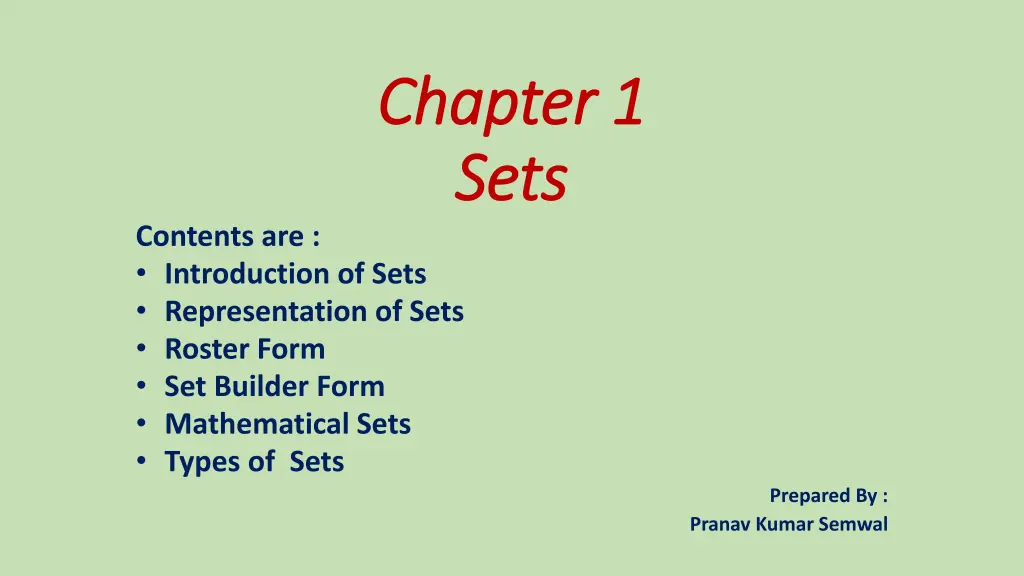
Introduction to Sets: Representation, Types, and Mathematical Concepts
Explore the fundamental concepts of sets, including representation, types such as empty sets and finite sets, and mathematical set theory. Learn about different forms of representing sets and common mathematical sets like natural numbers, integers, and real numbers.
Download Presentation

Please find below an Image/Link to download the presentation.
The content on the website is provided AS IS for your information and personal use only. It may not be sold, licensed, or shared on other websites without obtaining consent from the author. If you encounter any issues during the download, it is possible that the publisher has removed the file from their server.
You are allowed to download the files provided on this website for personal or commercial use, subject to the condition that they are used lawfully. All files are the property of their respective owners.
The content on the website is provided AS IS for your information and personal use only. It may not be sold, licensed, or shared on other websites without obtaining consent from the author.
E N D
Presentation Transcript
Chapter 1 Chapter 1 Sets Sets Contents are : Introduction of Sets Representation of Sets Roster Form Set Builder Form Mathematical Sets Types of Sets Prepared By : Pranav Kumar Semwal
Introduction of Sets : Set is a well defined collection of objects. Well defined means collection should not change person to person . Ex. 1 . Collection of Top five Batsman of Indian cricket teem . This is not a set as this collection can be changed person to person . Ex. 2. Odd natural Numbers smaller then 10 answer is 1,3,5,7, 9, which is well defined so it is set Ex. 3. Solution of quadratic equation x2 4 = 0 Answer is x = 2 or -2 , which is well defined, so it is set. Ex. 4. Collection. Of vowels in English alphabet Answer is a, e, I, o, u. Which is well defined so it s a set. How to Represent Set? The objects of the set are called elements or members. Which written within the curly braces { } and each element in the set is separated by a coma (,). Name of the set should be a capital letter, and repeated elements written once. If letters are the elements of a set, then should be written in small letters.
Forms of Set Representation : - Set can be represented in two forms 1. Roster form (Tabular Form) : In this form all the elements are listed in the set. Ex. Set of odd natural numbers smaller then 10 are written as : A = {1, 3, 5, 7, 9} 2. Set Builder Form: In this form we write a variable (say x) representing any element of the set and then write the property of the element. Or we can say that in this form we give the definition of the elements of the set. Ex.1. A = { x : x is an odd natural number < 10} Ex. 2. B = { x : x is vowel of english alphabet } Ex. 3. C = { x : x is the solution of quadratic equation x2 4 = 0 } Concept of Belongs to : Let us consider a set : A = {1, 3, 5, 7, 9} In this set we can write 1 A, which read as 1 belongs to A Because 1 is an element of the set A. Same as for other elements also.
Mathematical Sets Mathematical Sets There are some predefined mathematical sets which we can use in questions : N : set of all natural numbers Z : set of all integers. Q : set of all rational numbers. R : set of all real numbers. Z+: set of all positive integers. R+: set of all positive real real numbers. Q+: set of all positive rational numbers.
Kinds of Sets Kinds of Sets 1. Empty Set: A set which does not contain any element is called the empty set or void set. It is denoted by . Ex. (I) Collection of natural numbers less then 1. (II) {x : x is an even prime number greater then 2} 2. Singleton Set: A set that contains only one element is called a singleton (or unit) set. Ex. (I) {0}. (II) { x: x is the capital of india}. (III) {x : x is an even prime number } 3. Finite Set: A set that contains definite number of elements is called a finite set. Or we can say a set whose elements are countable.
Ex. (I) A = {a, e, i, o, u} (II) M = {x: x is the month of a year}. 4.Infinite Set: A set that contain unlimited number of elements. Or whose elements are uncountable, is called infinite set. Ex. I) the set of all natural numbers . II) the set of points on a line. 5.Equal Set : Given two sets A and B. If every element of A is also an element of B and every element of set B is also an element of A, then the sets are said to be Equal. Eg. A = {1,2,3} and B = { 3,1,2} . Then A = B Cardinal Number (or Order) of Finite Set: The number of elements in a finite set A is called it s cardinal number. And it is denoted by n(A). Ex. If A ={1,2,3,0,5,6} then n(A) = 6
Some Examples Some Examples Ex. 1. Write the solution set of quadratic equation x2+ x -2 = 0 , in the roster form. Sol. x2+ x -2 = 0 => x2+ 2x x 2 =0 x(x + 2) (x 1) =0 (x + 2)(x 1) =0 x = -2 or 1 set A = { -2, 1} Ex. 2. Write the set B = {x : x is the integer and x2< 40} Sol. As we know that 12=1 , 22= 4, 32= 9, 42= 16, 52= 25, and 62=36 Therefor set B ={1, 2, 3, 4, 5, 6}
Ex.3. Write the set A = {1, 4, 9, 16, 25} in the set builder form. Sol. We have given that A = {1, 4, 9, 16, 25} in set builder form this can be written as A = { x : x is square of natural numbers smaller then 6} Or A = { x : x = n2, where 1<=n<6 , and n N Ex. 4. Write the set {1/2, 2/3, 3/4, 4/5, 5/6, 6/7} in the set builder form. Sol. Given the set A = {1/2, 2/3, 3/4, 4/5, 5/6, 6/7} We can see that in each element denominator is 1 more then the numerator. A = { x : x = n/(n + 1), where n is greater then equal to 1 and less then equal to 6, n N} Which is the required set builder form of the set A.


